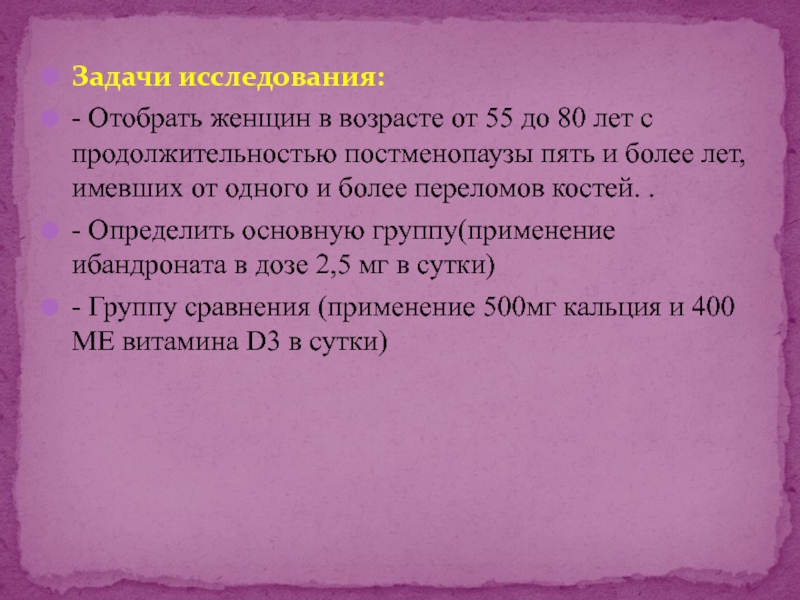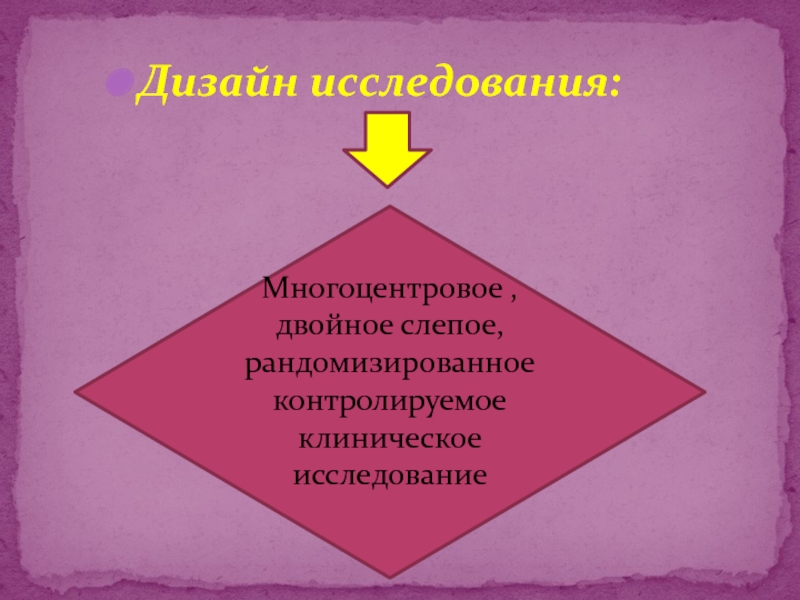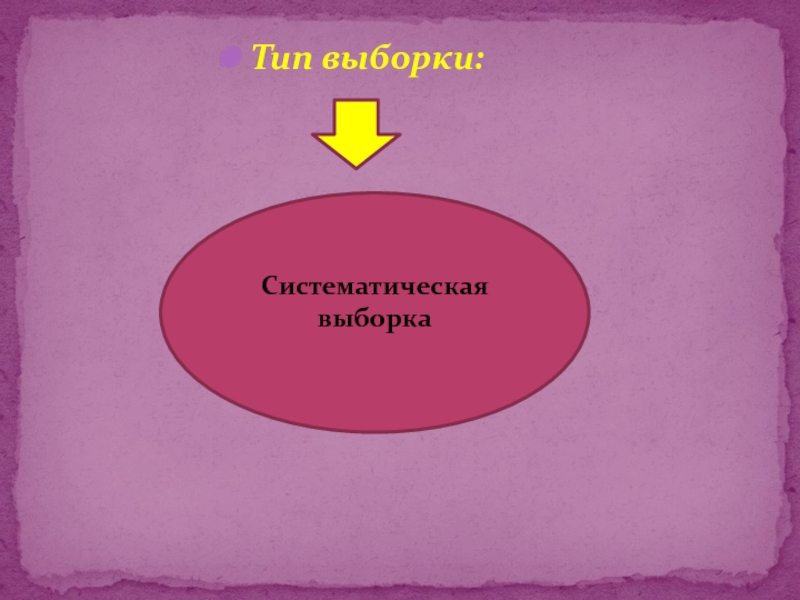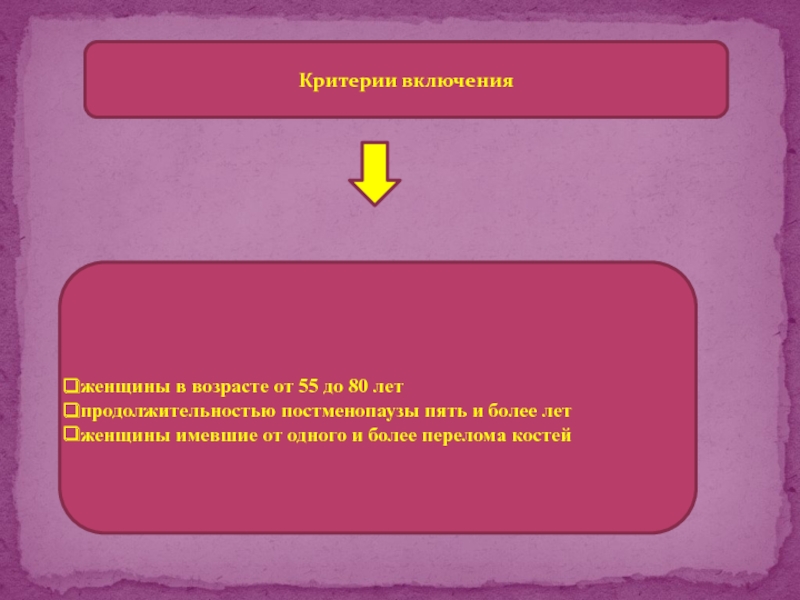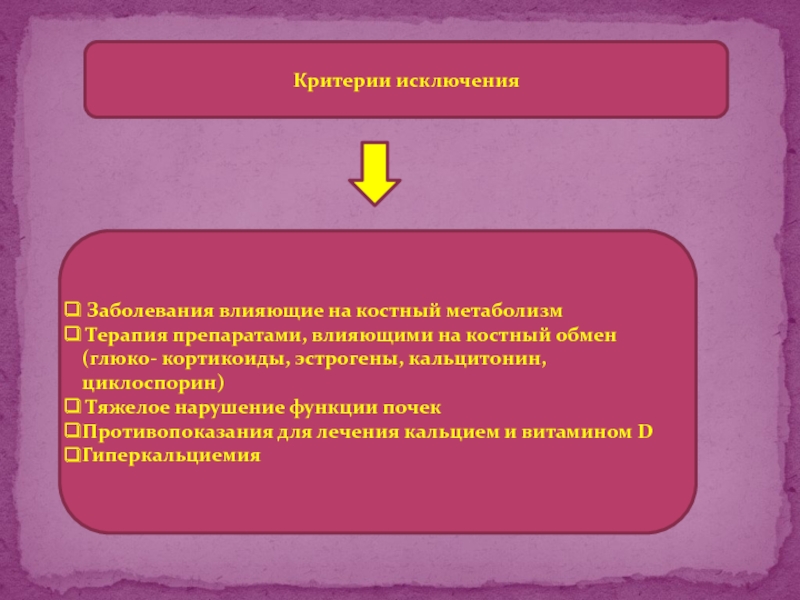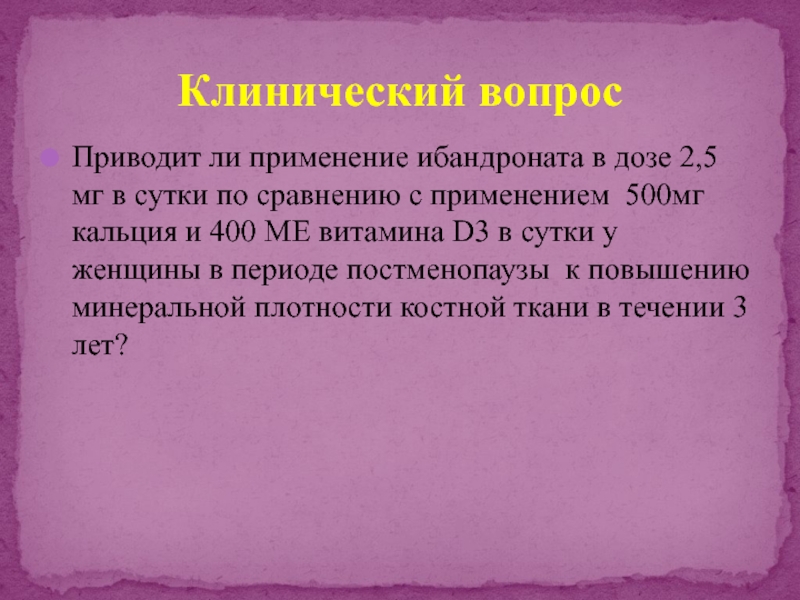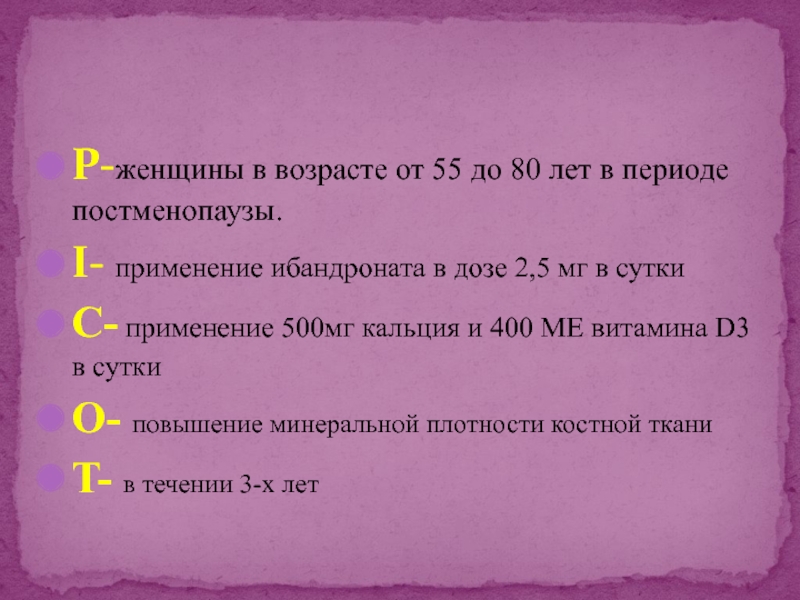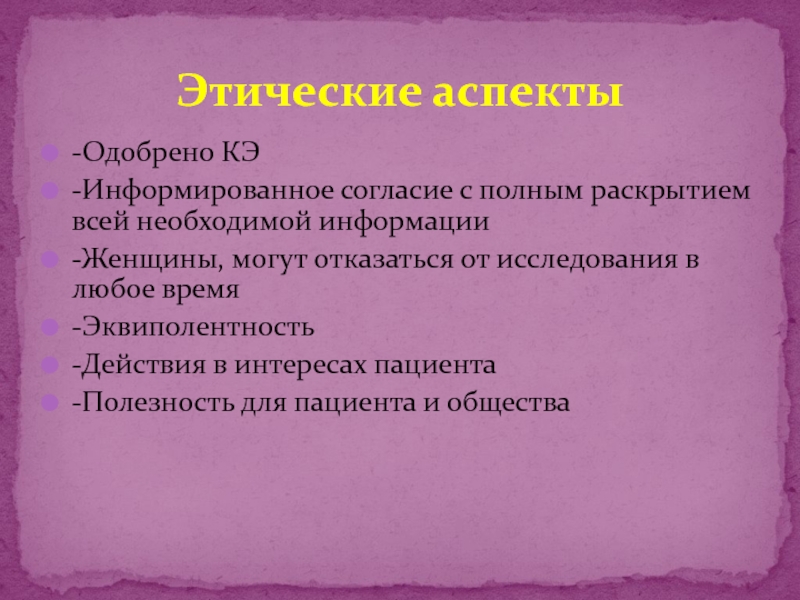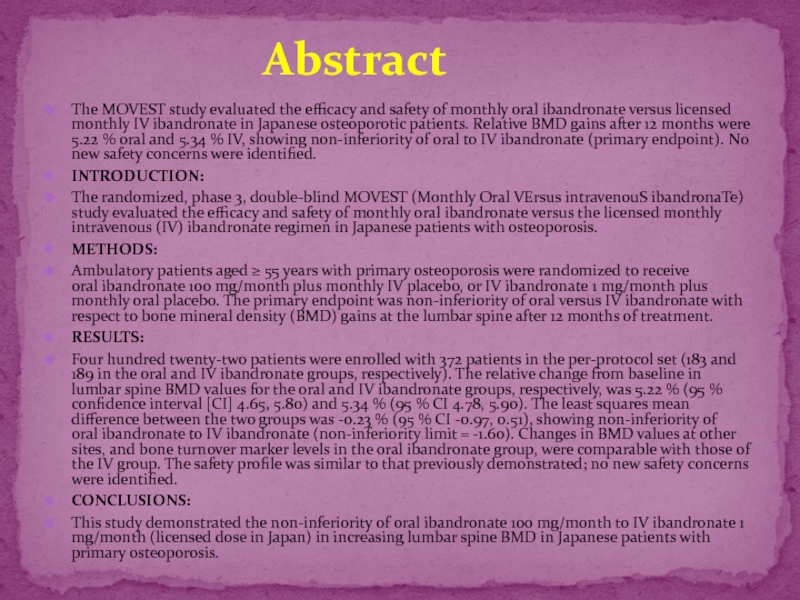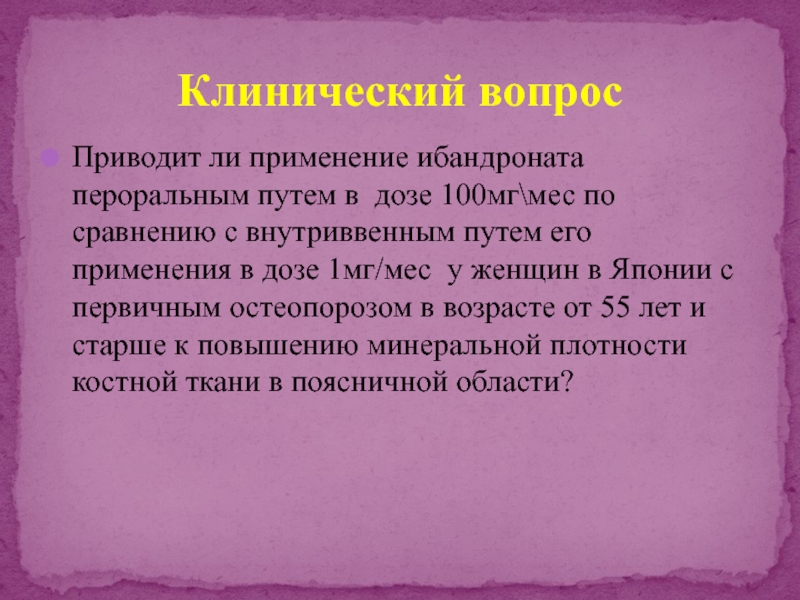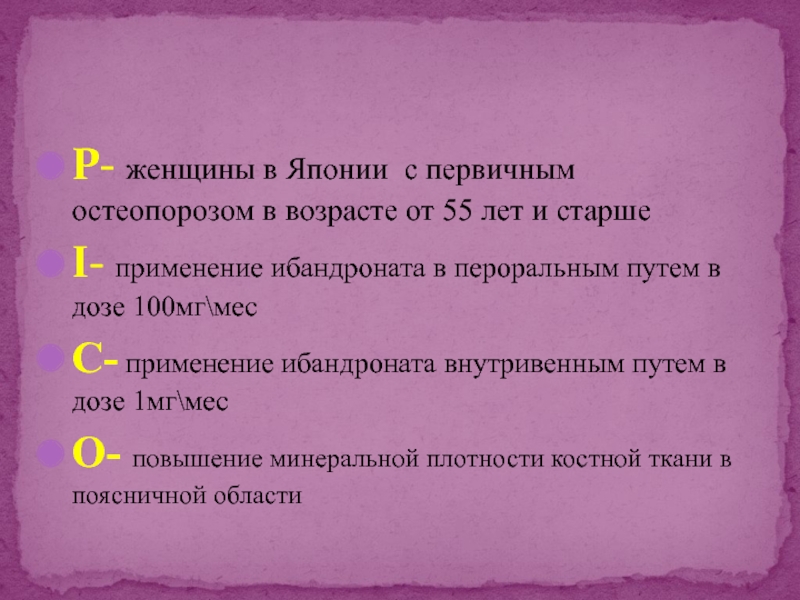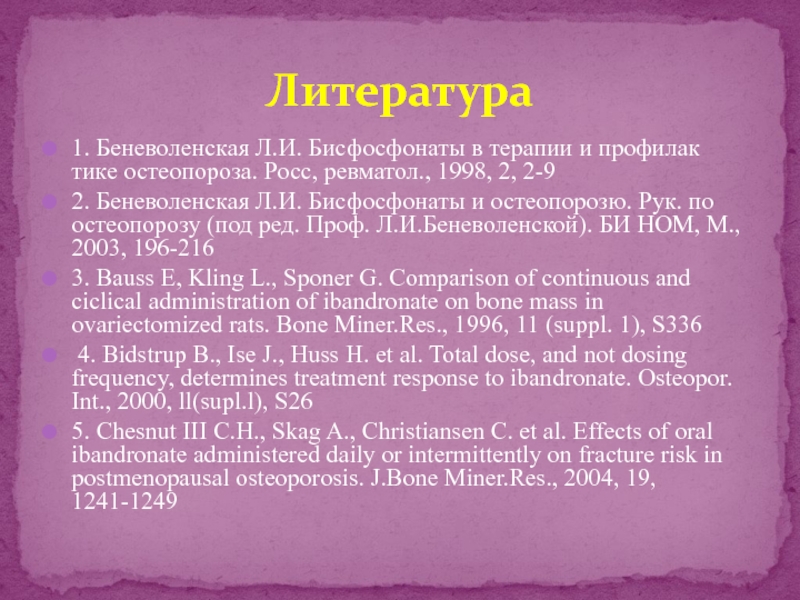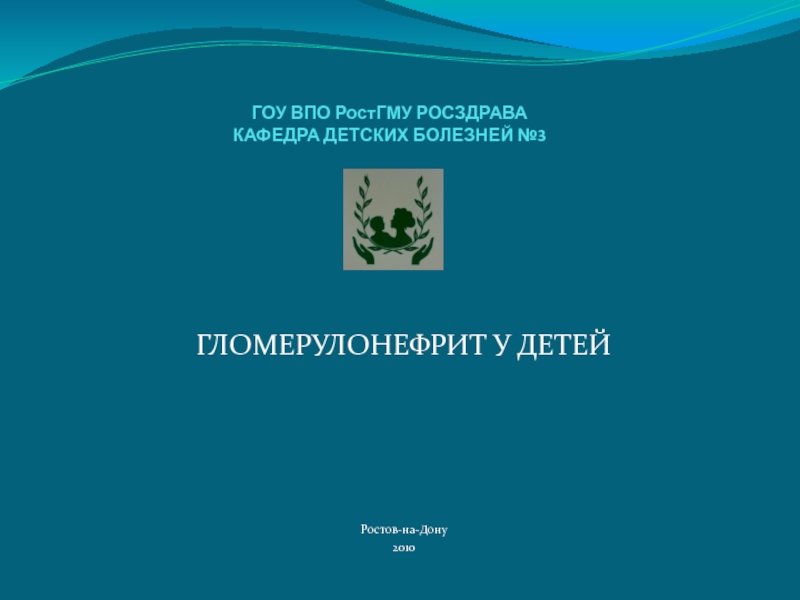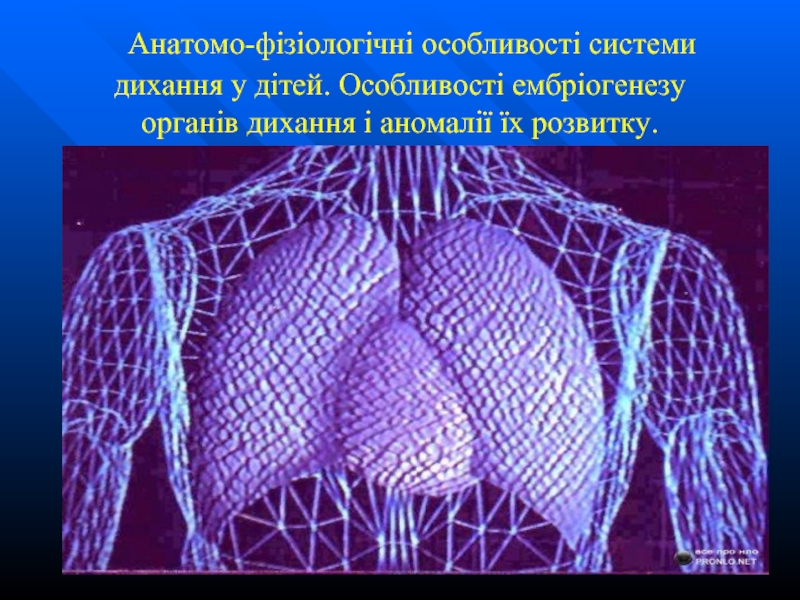Выполнила: Алдамжарова А 107гр
- Главная
- Разное
- Дизайн
- Бизнес и предпринимательство
- Аналитика
- Образование
- Развлечения
- Красота и здоровье
- Финансы
- Государство
- Путешествия
- Спорт
- Недвижимость
- Армия
- Графика
- Культурология
- Еда и кулинария
- Лингвистика
- Английский язык
- Астрономия
- Алгебра
- Биология
- География
- Детские презентации
- Информатика
- История
- Литература
- Маркетинг
- Математика
- Медицина
- Менеджмент
- Музыка
- МХК
- Немецкий язык
- ОБЖ
- Обществознание
- Окружающий мир
- Педагогика
- Русский язык
- Технология
- Физика
- Философия
- Химия
- Шаблоны, картинки для презентаций
- Экология
- Экономика
- Юриспруденция
Эффективность применения таблетированной формы Ибандроната при лечении постменопаузального остеопороза презентация
Содержание
- 1. Эффективность применения таблетированной формы Ибандроната при лечении постменопаузального остеопороза
- 2. Остеопороз - системное заболевание скелета, характеризующееся снижением
- 3. Ибандронат - новый лекарственный препарат класса бисфосфантов,
- 4. Цель исследования: Изучить эффективность и безопасность ибандроната,
- 5. Задачи исследования: - Отобрать женщин в возрасте
- 6. Дизайн исследования: Многоцентровое , двойное слепое, рандомизированное контролируемое клиническое исследование
- 7. Тип выборки: Систематическая выборка
- 8. Критерии включения женщины в возрасте
- 9. Критерии исключения Заболевания влияющие на
- 10. Приводит ли применение ибандроната в дозе 2,5
- 11. P-женщины в возрасте от 55 до 80
- 12. -Одобрено КЭ -Информированное согласие с полным раскрытием
- 13. The MOVEST study evaluated the efficacy and
- 14. Приводит ли применение ибандроната пероральным путем в
- 15. P- женщины в Японии с первичным остеопорозом
- 16. 1. Беневоленская Л.И. Бисфосфонаты в терапии и
Слайд 1Западно-Казахстанский медицинский университет имени Марата Оспанова
Эффективность применения таблетированной формы Ибандроната при
лечении постменопаузального остеопороза.
Слайд 2Остеопороз - системное заболевание скелета, характеризующееся снижением плотности костной ткани и
нарушением микроархитектоники кости с последующим повышением ее хрупкости и учащением риска переломов.
В настоящее время препаратами выбора для терапии данной болезни являются бисфосфонаты, которые связываются с костным минералом и подавляют резорбцию костной ткани, за счет чего уменьшают костный обмен и снижают риск переломов.
Слайд 3Ибандронат - новый лекарственный препарат класса бисфосфантов, который в настоящее время
начинают использовать для лечения постменопаузального остеопороза.
Слайд 4Цель исследования:
Изучить эффективность и безопасность ибандроната, высокоактивного азотсодержащего бисфосфоната, в течение
3-х летнего лечения больных с постменопаузальным остеопорозом.
Слайд 5Задачи исследования:
- Отобрать женщин в возрасте от 55 до 80 лет
с продолжительностью постменопаузы пять и более лет, имевших от одного и более переломов костей. .
- Определить основную группу(применение ибандроната в дозе 2,5 мг в сутки)
- Группу сравнения (применение 500мг кальция и 400 ME витамина D3 в сутки)
- Определить основную группу(применение ибандроната в дозе 2,5 мг в сутки)
- Группу сравнения (применение 500мг кальция и 400 ME витамина D3 в сутки)
Слайд 6Дизайн исследования:
Многоцентровое , двойное слепое, рандомизированное контролируемое клиническое исследование
Слайд 8Критерии включения
женщины в возрасте от 55 до 80 лет
продолжительностью постменопаузы пять
и более лет
женщины имевшие от одного и более перелома костей
женщины имевшие от одного и более перелома костей
Слайд 9Критерии исключения
Заболевания влияющие на костный метаболизм
Терапия препаратами, влияющими на
костный обмен (глюко- кортикоиды, эстрогены, кальцитонин, циклоспорин)
Тяжелое нарушение функции почек
Противопоказания для лечения кальцием и витамином D
Гиперкальциемия
Тяжелое нарушение функции почек
Противопоказания для лечения кальцием и витамином D
Гиперкальциемия
Слайд 10Приводит ли применение ибандроната в дозе 2,5 мг в сутки по
сравнению с применением 500мг кальция и 400 ME витамина D3 в сутки у женщины в периоде постменопаузы к повышению минеральной плотности костной ткани в течении 3 лет?
Клинический вопрос
Слайд 11P-женщины в возрасте от 55 до 80 лет в периоде постменопаузы.
I-
применение ибандроната в дозе 2,5 мг в сутки
C- применение 500мг кальция и 400 ME витамина D3 в сутки
О- повышение минеральной плотности костной ткани
T- в течении 3-х лет
C- применение 500мг кальция и 400 ME витамина D3 в сутки
О- повышение минеральной плотности костной ткани
T- в течении 3-х лет
Слайд 12-Одобрено КЭ
-Информированное согласие с полным раскрытием всей необходимой информации
-Женщины, могут отказаться
от исследования в любое время
-Эквиполентность
-Действия в интересах пациента
-Полезность для пациента и общества
-Эквиполентность
-Действия в интересах пациента
-Полезность для пациента и общества
Этические аспекты
Слайд 13The MOVEST study evaluated the efficacy and safety of monthly oral ibandronate versus
licensed monthly IV ibandronate in Japanese osteoporotic patients. Relative BMD gains after 12 months were 5.22 % oral and 5.34 % IV, showing non-inferiority of oral to IV ibandronate (primary endpoint). No new safety concerns were identified.
INTRODUCTION:
The randomized, phase 3, double-blind MOVEST (Monthly Oral VErsus intravenouS ibandronaTe) study evaluated the efficacy and safety of monthly oral ibandronate versus the licensed monthly intravenous (IV) ibandronate regimen in Japanese patients with osteoporosis.
METHODS:
Ambulatory patients aged ≥ 55 years with primary osteoporosis were randomized to receive oral ibandronate 100 mg/month plus monthly IV placebo, or IV ibandronate 1 mg/month plus monthly oral placebo. The primary endpoint was non-inferiority of oral versus IV ibandronate with respect to bone mineral density (BMD) gains at the lumbar spine after 12 months of treatment.
RESULTS:
Four hundred twenty-two patients were enrolled with 372 patients in the per-protocol set (183 and 189 in the oral and IV ibandronate groups, respectively). The relative change from baseline in lumbar spine BMD values for the oral and IV ibandronate groups, respectively, was 5.22 % (95 % confidence interval [CI] 4.65, 5.80) and 5.34 % (95 % CI 4.78, 5.90). The least squares mean difference between the two groups was -0.23 % (95 % CI -0.97, 0.51), showing non-inferiority of oral ibandronate to IV ibandronate (non-inferiority limit = -1.60). Changes in BMD values at other sites, and bone turnover marker levels in the oral ibandronate group, were comparable with those of the IV group. The safety profile was similar to that previously demonstrated; no new safety concerns were identified.
CONCLUSIONS:
This study demonstrated the non-inferiority of oral ibandronate 100 mg/month to IV ibandronate 1 mg/month (licensed dose in Japan) in increasing lumbar spine BMD in Japanese patients with primary osteoporosis.
INTRODUCTION:
The randomized, phase 3, double-blind MOVEST (Monthly Oral VErsus intravenouS ibandronaTe) study evaluated the efficacy and safety of monthly oral ibandronate versus the licensed monthly intravenous (IV) ibandronate regimen in Japanese patients with osteoporosis.
METHODS:
Ambulatory patients aged ≥ 55 years with primary osteoporosis were randomized to receive oral ibandronate 100 mg/month plus monthly IV placebo, or IV ibandronate 1 mg/month plus monthly oral placebo. The primary endpoint was non-inferiority of oral versus IV ibandronate with respect to bone mineral density (BMD) gains at the lumbar spine after 12 months of treatment.
RESULTS:
Four hundred twenty-two patients were enrolled with 372 patients in the per-protocol set (183 and 189 in the oral and IV ibandronate groups, respectively). The relative change from baseline in lumbar spine BMD values for the oral and IV ibandronate groups, respectively, was 5.22 % (95 % confidence interval [CI] 4.65, 5.80) and 5.34 % (95 % CI 4.78, 5.90). The least squares mean difference between the two groups was -0.23 % (95 % CI -0.97, 0.51), showing non-inferiority of oral ibandronate to IV ibandronate (non-inferiority limit = -1.60). Changes in BMD values at other sites, and bone turnover marker levels in the oral ibandronate group, were comparable with those of the IV group. The safety profile was similar to that previously demonstrated; no new safety concerns were identified.
CONCLUSIONS:
This study demonstrated the non-inferiority of oral ibandronate 100 mg/month to IV ibandronate 1 mg/month (licensed dose in Japan) in increasing lumbar spine BMD in Japanese patients with primary osteoporosis.
Abstract
Слайд 14Приводит ли применение ибандроната пероральным путем в дозе 100мг\мес по сравнению
с внутриввенным путем его применения в дозе 1мг/мес у женщин в Японии с первичным остеопорозом в возрасте от 55 лет и старше к повышению минеральной плотности костной ткани в поясничной области?
Клинический вопрос
Слайд 15P- женщины в Японии с первичным остеопорозом в возрасте от 55
лет и старше
I- применение ибандроната в пероральным путем в дозе 100мг\мес
C- применение ибандроната внутривенным путем в дозе 1мг\мес
О- повышение минеральной плотности костной ткани в поясничной области
I- применение ибандроната в пероральным путем в дозе 100мг\мес
C- применение ибандроната внутривенным путем в дозе 1мг\мес
О- повышение минеральной плотности костной ткани в поясничной области
Слайд 161. Беневоленская Л.И. Бисфосфонаты в терапии и профилак тике остеопороза. Росс,
ревматол., 1998, 2, 2-9
2. Беневоленская Л.И. Бисфосфонаты и остеопорозю. Рук. по остеопорозу (под ред. Проф. Л.И.Беневоленской). БИ НОМ, М., 2003, 196-216
3. Bauss Е, Kling L., Sponer G. Comparison of continuous and ciclical administration of ibandronate on bone mass in ovariectomized rats. Bone Miner.Res., 1996, 11 (suppl. 1), S336
4. Bidstrup B., Ise J., Huss H. et al. Total dose, and not dosing frequency, determines treatment response to ibandronate. Osteopor. Int., 2000, ll(supl.l), S26
5. Chesnut III C.H., Skag A., Christiansen C. et al. Effects of oral ibandronate administered daily or intermittently on fracture risk in postmenopausal osteoporosis. J.Bone Miner.Res., 2004, 19, 1241-1249
2. Беневоленская Л.И. Бисфосфонаты и остеопорозю. Рук. по остеопорозу (под ред. Проф. Л.И.Беневоленской). БИ НОМ, М., 2003, 196-216
3. Bauss Е, Kling L., Sponer G. Comparison of continuous and ciclical administration of ibandronate on bone mass in ovariectomized rats. Bone Miner.Res., 1996, 11 (suppl. 1), S336
4. Bidstrup B., Ise J., Huss H. et al. Total dose, and not dosing frequency, determines treatment response to ibandronate. Osteopor. Int., 2000, ll(supl.l), S26
5. Chesnut III C.H., Skag A., Christiansen C. et al. Effects of oral ibandronate administered daily or intermittently on fracture risk in postmenopausal osteoporosis. J.Bone Miner.Res., 2004, 19, 1241-1249
Литература




